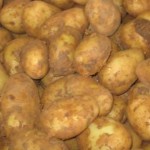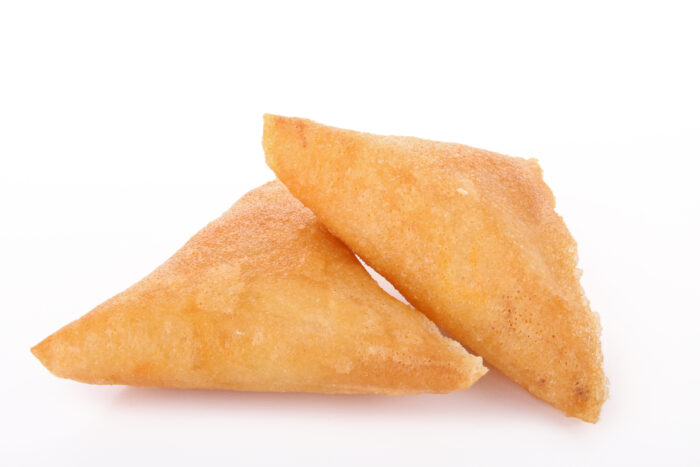Samosa are a baked or fried pastry filled with a savoury filling. They are delicous snacks found across South Asia.
Fillings can vary, but usually consist of a spiced vegetable mix. Here we’ve used a mix of potatoes, onions and peas, but you can use any vegetables that you have available. A great way to use up leftovers!
Skills Check
Follow a recipe; follow food safety & hygiene rules; tidy away; crack an egg; beat an egg; glaze pastry; use measuring spoons; cut using the bridge/claw technique safely; use the hob/oven (with adult supervision)
Equipment
Oven, chopping board, sharp knife, 2 small bowls, measuring spoons, pastry brush, baking tray.
Allergens
Please note the allergens listed below are indicative only. Allergens vary depending on brand; check the labels on the products you use
Wheat | Gluten | Eggs | Sulphites | May contain milk
Ingredients (makes 2 samosa):
- 2 new potatoes, boiled and cooled
- 1 tbsp peas, cooked and cooled
- 1/4 red onion
- 1/2 tsp lemon juice
- 1/2 tsp curry powder
- 1 sheet of filo pastry, cut in half to form 2 rectangles
- 1 egg
Method
- Cut the potatoes into small cubes.
- Peel the onion and cut into small diced pieces/cubes.
- Combine the onion and potatoes in a small bowl.
- Add the lemon juice and curry powder to the bowl and mix well.
- Crack the egg into a separate bowl, and beat with a fork.
- Lay the two pieces of filo pastry on a clean chopping board and place your filling in the middle of the longer edge of the sheet. Be careful not to overfill it!
- Brush beaten egg around the edges of the pastry sheet and fold the top corners to make a triangle. Fold the bottom section over to make the base of the triangle.
- Place the samosas on a baking tray and brush with a little more egg glaze.
- Bake the samosa for 10-15 minutes until golden at 200C (gas mark 6).
So thinking about samosa ...

Filo pastry is lower in fat than other pastries, providing no additional butter or oil is added to it.
Vegetables are so good for us! Low in fat, sugar and calories and high in vitamins and minerals.
Nutritional Information
| Energy | 482kJ/114kcal | 6% | |
| Low | Fat | 1.1g | 2% |
| Low | Saturates | 0.2g | 1% |
| Low | Sugars | 2.5g | 3% |
| Med | Salt | 0.22g | 4% |
per 69g serving
% of an adult's reference intake
Typical values per 100g: Energy 697kJ / 165kcal
Notes
A traffic light system is used on nutrition labels to make it easier to see which foods and drinks are lower in calories, fat, sugar and salt. Try and choose more ‘greens’ and ‘ambers’ and fewer ‘reds’, and stick to smaller portions of ‘reds’.
Just because a recipe or a food has a red traffic light doesn’t mean you shouldn’t eat it. Understanding why a food or recipe might have a red light can be helpful. For example oily fish is high in total fat and so any recipe containing oily fish is likely to be ‘red’ for fat. But it is recommended that we eat oily fish at least once a week because the type of fat it contains is beneficial for our health.
% Reference Intakes are also shown. Reference Intakes are guidelines about the approximate amount of particular nutrients and energy required for a healthy diet (based on an average-sized woman doing an average amount of physical activity). Most children will require less than these Reference Intakes. The contribution of one serving of a food or drink to the Reference Intake for each nutrient is expressed as a percentage.




